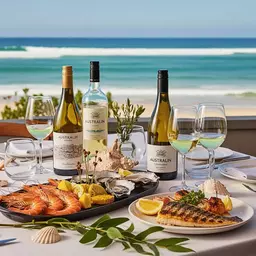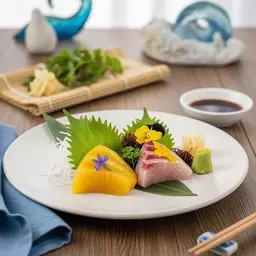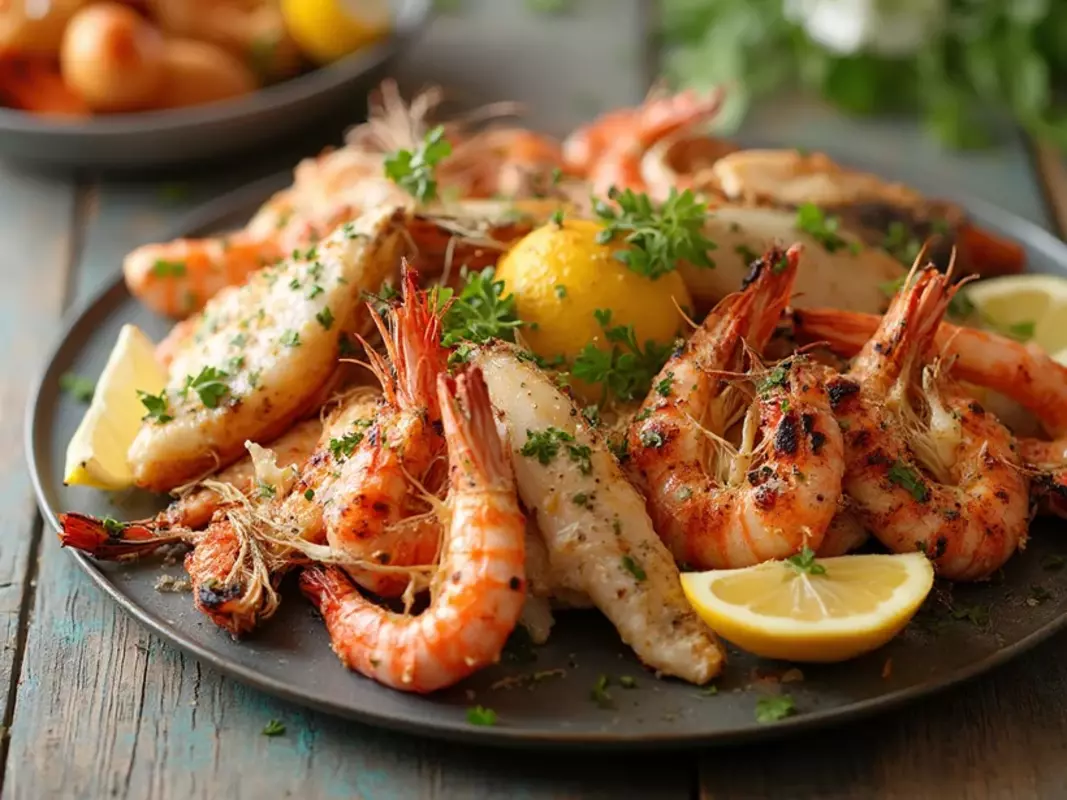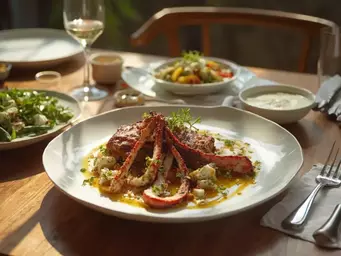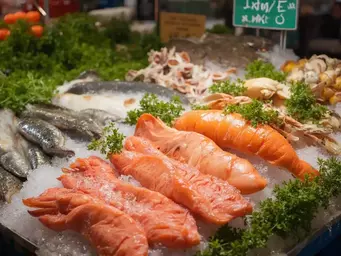Sustainable Seafood in Australian Cuisine
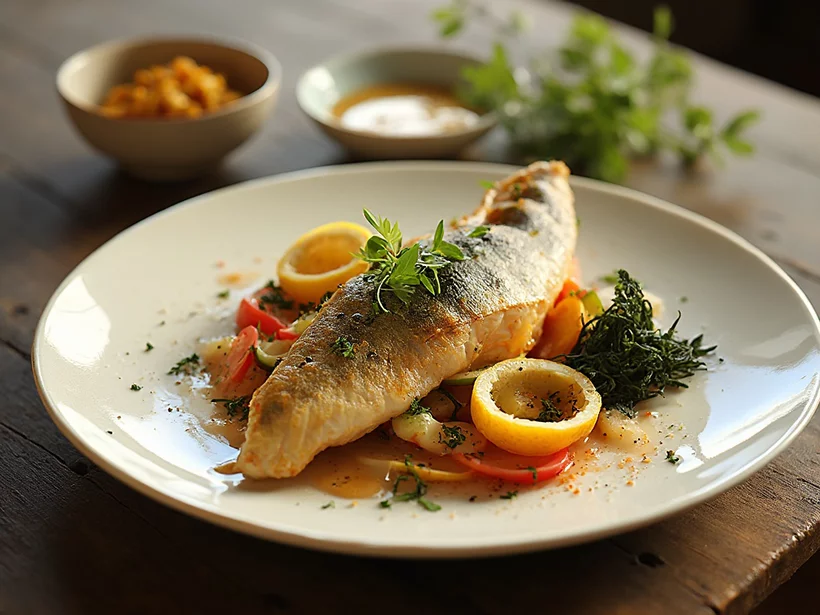
As we dive into the culinary world of sustainable seafood, the choices we make today can ripple through generations. What if every meal could contribute to healthier oceans? Let's explore how our dining habits can shape the future of marine ecosystems.
What You Will Learn
- Sustainable seafood refers to fish and shellfish sourced in ways that maintain healthy ocean ecosystems and avoid overfishing.
- Australia's diverse marine biodiversity plays a crucial role in sustainable fishing practices, highlighting local culinary specialties.
- Consumer choices can have significant impacts; opting for seafood with recognized certifications supports responsible fishing practices.
- Community engagement and advocacy are essential for promoting sustainable seafood practices at local markets and restaurants.
The Pillars of Sustainable Seafood in Australia
Understanding sustainable seafood is crucial for preserving Australia's rich marine biodiversity. This visual highlights key aspects contributing to a thriving ocean ecosystem and responsible consumption practices.
Defining Sustainable Seafood: Practices & Impact
- ✓Ecological Balance
- ✓Community Health
- ✓Future Generations
Australian Waters: Biodiversity & Conservation
- ●Great Barrier Reef Protection
- ●Southern Bluefin Tuna Recovery
- ●Local Species Sourcing (Barramundi, Whiting)
Informed Choices: Guiding Sustainable Consumption
- ★MSC Certifications
- ★Support Local Fisheries
- ★Ask About Sourcing
Tools & Traceability: Empowering Consumers
- ►GoodFish Guide
- ►Seafood Watch
- ►Demand Origin Labels
Understanding Sustainable Seafood in the Context of Australian Cuisine
When we talk about sustainable seafood, we’re diving into the heart of culinary responsibility—making choices that not only delight our palates but also protect our oceans. In the context of Australia, a nation blessed with rich marine biodiversity, this concept becomes even more vital. It’s about ensuring that we enjoy our seafood today while preserving it for generations to come. So, why does sustainable seafood matter? It’s not just about the fish on our plates; it’s about the overall health of our oceans and the communities that rely on them.
Defining Sustainable Seafood and Its Importance
Sustainable seafood refers to fish and shellfish that are caught or farmed in ways that maintain healthy populations and ecosystems. This means prioritizing practices that avoid overfishing and minimize environmental impact. For us here in Australia, where coastal waters are teeming with life, understanding this sustainability is crucial. Our choices have the power to influence fishing practices and the health of our marine ecosystems. Australia operates under a comprehensive National Fisheries Plan, which guides sustainable management and ensures the long-term viability of its fisheries.
- Ecological Balance: Sustainable fishing helps maintain the balance of marine ecosystems.
- Community Health: Local fishermen and coastal communities thrive when seafood is sourced responsibly.
- Future Generations: Protecting fish populations ensures that future generations can enjoy the richness of our oceans.
By choosing sustainable seafood, we not only support local economies but also contribute to a healthier planet. It's a collective effort that starts with each of us making informed decisions at our favorite restaurants or markets!
The Role of Australian Waters in Seafood Sustainability
Australia is blessed with one of the longest coastlines in the world, stretching over 36,000 kilometers. This extensive coastline is home to unique species and diverse ecosystems, playing a significant role in sustainable fishing practices. The waters around Australia are not just a source of food; they are vital habitats that must be protected. Each region boasts its own culinary specialties that highlight the bounty of the sea, from the northern tropical waters to the cooler southern coasts. For example, the Australian Fisheries Management Authority (AFMA) plays a key role in managing Commonwealth fisheries to ensure their sustainability.
- Great Barrier Reef: Known for its vibrant marine life, this UNESCO World Heritage Site requires sustainable practices to preserve its beauty.
- Southern Bluefin Tuna: A species that has faced overfishing, making sustainable choices essential for its recovery.
- Local Species: Fish like barramundi and whiting are not only delicious but can be sustainably sourced.
As we appreciate the culinary gifts of our oceans, let’s also commit to protecting these precious waters. The flavors we love are intricately linked to the health of our marine environments, so it’s crucial that we advocate for practices that safeguard them.
Marine Biodiversity and Its Impact on Sustainable Practices
Australia’s marine biodiversity is among the richest in the world, providing a foundation for sustainable seafood practices. This biodiversity includes not just fish, but also a stunning array of coral reefs, seagrass beds, and coastal habitats that support countless species. Protecting these ecosystems is paramount for sustainable fishing and seafood consumption. There's a growing call for the Australian government to tighten seafood import rules to further protect domestic marine ecosystems and support sustainable practices, as highlighted by organizations like the Marine Conservation Society Australia.
- Endangered Species: Many marine species face threats from climate change and habitat loss, making sustainable practices essential.
- Healthy Ecosystems: Biodiversity contributes to resilient marine ecosystems, which can better withstand environmental changes.
- Community Involvement: Engaging local communities in conservation efforts fosters a sense of responsibility and stewardship.
By understanding this intricate web of life, we can better appreciate the seafood we consume and the responsibility we have to protect these ecosystems. At The Yellow Tail Table, we celebrate not only the flavors of Australian cuisine but also the stories behind them—stories that highlight the importance of sustainability in every dish.
We Want to Hear From You!
How do you incorporate sustainable seafood choices into your dining habits? Share your thoughts and tips below:
Frequently Asked Questions About Sustainable Seafood in Australia
- What is sustainable seafood?
- Sustainable seafood refers to fish and shellfish caught or farmed using methods that maintain healthy populations and ecosystems, avoiding overfishing and minimizing environmental impact.
- Why is sustainable seafood important in Australia?
- Given Australia's extensive coastline and rich marine biodiversity, sustainable seafood practices are crucial for preserving marine ecosystems, supporting local communities, and ensuring future generations can enjoy healthy oceans and seafood.
- How can I make informed choices about sustainable seafood?
- You can make informed choices by looking for trusted certifications (like MSC), supporting local fisheries committed to sustainable practices, asking questions about seafood sourcing at restaurants, and opting for seasonal seafood.
- What resources are available to help identify sustainable seafood?
- Helpful resources include the GoodFish Guide, Seafood Watch, and websites of local fisheries, which provide information on sustainable options and practices.
- What is the role of traceability in sustainable seafood?
- Traceability enhances transparency by allowing consumers to know the origin of their seafood. Demanding traceability encourages higher sustainability standards throughout the supply chain and builds consumer trust.
Embracing Sustainable Seafood: A Call to Action
As we wrap up our culinary journey through the world of sustainable seafood, it's clear that each one of us has a role to play in this movement. By applying the insights we've gained about sustainable practices, we can all make informed choices that contribute to a healthier planet and a more vibrant culinary scene. Let's dive into how you can make a difference in your everyday life and dining habits!
Making Informed Choices for a Sustainable Future
It's essential to understand that our choices at the market or restaurant table can have a profound impact. When we opt for sustainable seafood, we're not just indulging in delicious flavors; we're supporting responsible fishing practices that protect our marine ecosystems. So, how can you ensure you're making the best choices?
- Choose seafood with trusted certifications like the Marine Stewardship Council (MSC) blue fish tick.
- Research local fisheries and support those committed to sustainable practices.
- Ask questions at restaurants about their seafood sourcing.
- Opt for seasonal seafood to support local fisheries and ensure freshness.
By taking these steps, you're not only enhancing your dining experience but also contributing to a sustainable future for Australian cuisine and beyond!
Utilizing Resources for Continued Education
With so much information out there, staying informed can feel overwhelming at times. But don't worry; there are fantastic tools to help guide you on your sustainable seafood journey! Here are some resources that I highly recommend:
- GoodFish Guide: This handy app helps you identify sustainable seafood options at your fingertips.
- Seafood Watch: Created by the Monterey Bay Aquarium, this resource provides up-to-date recommendations for seafood sustainability.
- Local fisheries' websites: Many local organizations share valuable information on their practices and commitment to sustainability.
By utilizing these resources, you can continually educate yourself and stay informed about the best seafood choices available!
Promoting Seafood Traceability for Better Consumer Awareness
Another vital aspect of sustainable seafood is traceability. Knowing where your seafood comes from enhances transparency and builds consumer trust. When we demand traceability, we encourage fisheries and suppliers to maintain higher standards of sustainability.
- Look for seafood labeled with information about its origin.
- Support brands that prioritize transparency in their supply chains.
- Engage in conversations about traceability with local vendors and chefs!
By advocating for seafood traceability, we not only make better-informed decisions but also push the industry towards more sustainable practices. Together, we can foster a wave of awareness that benefits our oceans and local communities alike!
Summary of Key Points and Next Steps
Recap of Sustainable Seafood Practices and Their Importance
Throughout this article, we’ve explored the significance of choosing sustainable seafood within the context of Australian cuisine. From understanding the certifications that guide our choices to recognizing the role of local fisheries, each element is interconnected in celebrating our rich marine biodiversity. Remember, every time you choose sustainable seafood, you're helping to protect our oceans while enjoying the flavors they have to offer!
Encouraging Community Engagement and Advocacy
Lastly, let’s talk about the power of community! As we strive for a sustainable seafood future, your voice and actions matter. Here are some ways you can engage with your community:
- Participate in local seafood sustainability events or workshops.
- Share your sustainable seafood journey on social media to inspire others.
- Advocate for better practices in your local markets and restaurants.
Together, we can create a movement that not only enhances our dining experiences but also supports our environment. So, let’s continue to celebrate the artistry of Australian cuisine while championing sustainability!
Recap of Key Points
Here is a quick recap of the important points discussed in the article:
- Understanding Sustainable Seafood: It's crucial for preserving marine ecosystems and supporting local communities.
- The Role of Australian Waters: Australia's diverse waters provide unique seafood that must be sourced sustainably.
- Marine Biodiversity: Protecting biodiversity ensures healthy ecosystems, essential for sustainable fishing practices.
- Making Informed Choices: Look for trusted certifications, support local fisheries, and inquire about seafood sourcing.
- Community Engagement: Participate in local events and share your sustainable seafood journey to inspire others.

